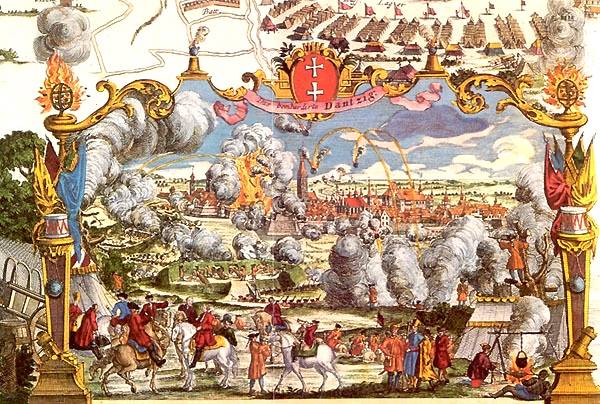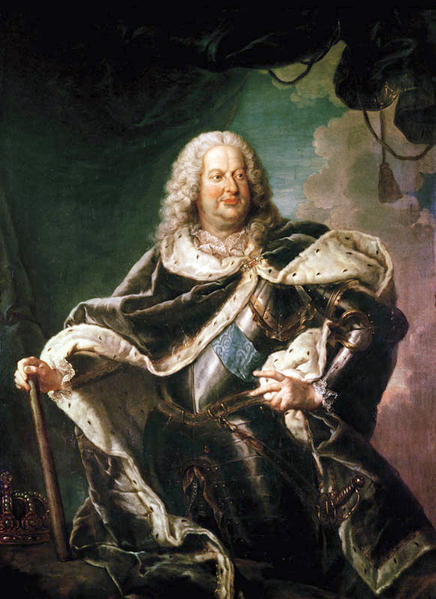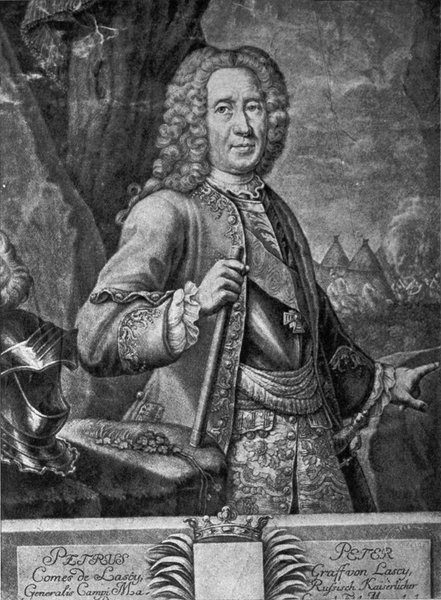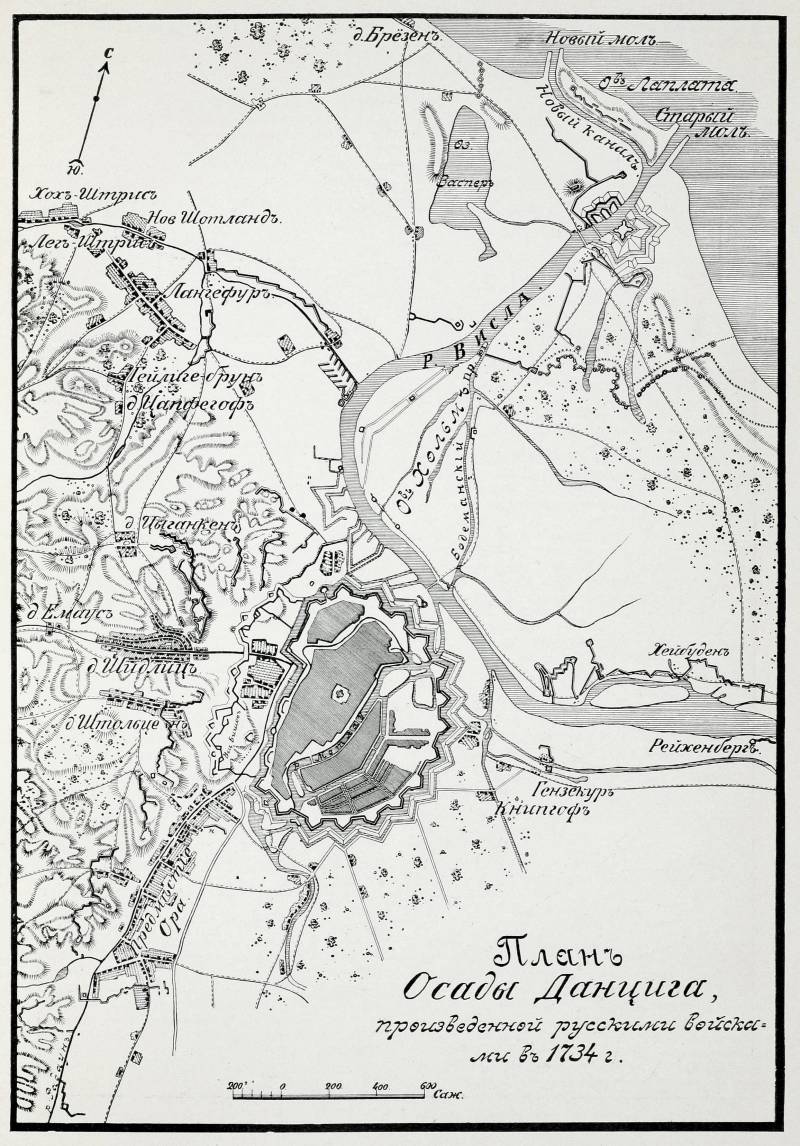"They had a strong fear of the Russians." How Russian "peacekeepers" put Polish kings on the throne

Fight for the Polish table
After the end of the Northern War, the Polish king August II (How "Greater Poland" fell), having no support among the Polish gentry, could not free himself from Russian dependence. Russia and Prussia, not wanting a strong Commonwealth at their borders and the appearance of a protege of France there, tried to maintain the status quo. In addition, August preferred to live in quiet Saxony. The disorder in Poland, which was based on the actions of the magnates and the gentry, continued.
In February 1733, the Saxon prince and Polish king Augustus the Strong died. The first person in the Commonwealth was the head of the Catholic Church (primate), Archbishop Fyodor Potocki of Gniezno. He was born in Russia, his mother was Russian. At first, Potocki was guided by Russia, but then he became a supporter of the former king Stanislav Leshchinsky, who lived in France and became related to the French king (married his daughter Mary to Louis XV). Potocki dissolved the Sejm, the late king's guard, and ordered the Saxons who were in the service of Augustus to leave the country. Potocki spoke out against the candidacy of the son of Augustus the Strong - also Augustus.
France, which had long been scheming in favor of Leshchinsky, immediately allocated a large sum to bribe the gentry. The Saxon authorities wanted to plant their prince Augustus III in Poland. The Saxon was married to Maria Joseph of Austria, daughter of Emperor Joseph I, so Austria was for him. But the Prussian king Friedrich Wilhelm was categorically against Augustus. Therefore, the Vienna court proposed a compromise - the Portuguese prince Don Emmanuel. Vienna also sent money to Warsaw to bribe the lords. Petersburg sent a formidable letter to the primate, in which Empress Anna Ioannovna demanded that Stanislav Leshchinsky be excluded from the list of candidates for the Polish throne. In August 1733, Russia and Saxony entered into a military alliance.
On August 25, 1733, an electoral congress opened in Warsaw. France allocated 3 million livres to bribe the gentry. Paris also sent a squadron to the Baltic (9 ships, 3 frigates and 1 corvette). Officially, it was believed that the squadron was escorting Stanislav Leshchinsky. The squadron reached Copenhagen, then returned to Brest (having received the news that Leshchinsky had been chosen as king). Most of the lords were in favor of Leshchinsky, but the opposition was also strong. Leshchinsky himself secretly made his way through Germany and on September 9 arrived in Warsaw. By the evening of September 11, the overwhelming majority of the lords supported Leshchinsky, and those who disagreed moved to the other side of the Vistula in the suburbs of Prague. On September 12, the primate proclaimed Leshchinsky king.

Actions of "limited contingent" Lassi
In Paris, they rejoiced at the success early. The fate of the Polish throne was decided not in Warsaw and Paris, but in St. Petersburg. Back in February 1733, at a secret meeting, it was decided to send a "limited contingent" of troops to Poland, consisting of 18 infantry and 10 cavalry regiments. The corps was reinforced by irregular troops - Don and Ukrainian Cossacks, Kalmyks.
The Riga Corps, previously stationed near the Polish border, was headed by the Governor-General of Livonia, Peter Lassi, who entered the Russian service as early as 1700 and served Peter the Great. Also, the Smolensk Corps of Lieutenant General Artemy Zagryazhsky was prepared for the campaign. Both corps, Riga and Smolensk, were to connect and go to Grodno under the overall command of Lassi.
On July 31, 1733, Lassi's troops crossed the border and entered Lithuania through Courland. There was no resistance from the local gentry. Noble lords left for Warsaw, and the population got used to the movement of foreign troops (Swedes, Saxons and Russians). Meanwhile, Leszczynski's opponents left Warsaw and formed a confederation against the king. On August 27, Lassi was in Grodno, soon the confederations arrived and thanked the Russian empress "for the high mercy and protection and asked not to leave them with their current extreme needs." On the night of September 20, Russian troops arrived in Prague on the outskirts of Warsaw. The battery was installed this morning.
Polish troops were stationed on the opposite bank and on an island on the Vistula between Warsaw and Prague. The Russians and Poles fired on each other's positions, but without much success. On September 22, Leshchinsky's Polish opponents created a new confederation headed by Marshal Poninsky. On the same day, Leshchinsky fled with his retinue to Gdansk (Danzig). The fortress located on the coast was the strongest in the Commonwealth and one of the best in Europe. It was also possible to get help from France there.
On September 24, 1733, half a mile from Prague, in the Grochov tract, the opposition elected Friedrich August, Elector of Saxony, to the throne. The new king of Poland became known as August III. The Russian army began to force the Vistula, the Polish troops left Warsaw and went to Krakow. The Russians occupied the Polish capital and left a garrison there. Lassi was waiting for the Saxon army to enter Poland.
At this time, in different places of the Commonwealth, pans began to create confederations in support of King Stanislav. Among them were the Sandomierz, Volyn, Podolsk and Kyiv confederations. However, the Polish gentry freemen had no chance against the regular Russian army. Therefore, Leshchinsky pinned all his hopes only on France.

The Siege of Danzig
The Russian government also understood that the main danger was not in the Polish gentry, but in Stanislav in Danzig, where the French and other allies could come to his aid. With French money, large forces were assembled in Danzig - about 20 thousand people. There were several French military engineers in the city, about 100 Swedish officers, the garrison was reinforced by more than 3 thousand French soldiers and mercenaries. Also, the Danzig garrison was supported by Polish detachments located in the "field". Therefore, at the end of 1733, General-in-Chief Lassi received an order to go to Danzig. In Poland at that time there was a 50-strong Russian army, but many forces were required to contain hostile confederations and control cities and communications. Therefore, Lassi was allocated only the 12th corps.
On January 16, 1733, Lassi's troops occupied Thorn, and on February 11 they reached Danzig. Lassi invited the townspeople to retreat from Stanislav and submit to the legitimate king Augustus. In case of refusal, expect "bad consequences." The townspeople did not accept the ultimatum. General Lassi, with the available forces, without siege artillery, could not take a strong fortress with a large garrison, strong artillery and good commanders. But the Russian troops quite successfully defeated the detachments of the Confederates.
The Russian government considered the capture of Danzig the most important goal of the campaign and, not very trusting in the skills of Lassi, decided to send there the most famous commander of the empire, the president of the Military Collegium, Field Marshal Burchard Munnich. In addition, Minich wanted to be removed from the capital by his political opponents. On March 5, 1743, Minich arrived at Danzig and took command. He began active hostilities, despite the fact that Generals Lassi, Baryatinsky and Volynsky were against it and believed that it was necessary to wait for the heavy artillery to approach.
First, they began to build trenches and a redoubt from the Zigankenberg side. On the night of March 19-20, our troops stormed the Ora fortification, where there was a garrison of 400 soldiers. Russian troops had only 3-6 pound guns. In Ora, 12 8-pounder cannons and 2 mortars were captured, with their help they began shelling the fortress. Then Minich sent a detachment to the city of Elbing, located 50 miles from Danzig. The city was taken without a fight, the found guns and supplies were sent to the camp near Danzig.
The confederates ("Stanislavchiks") tried to prevent the siege. The Confederate corps, under the command of Count Tarlo and the castellan Czersky, crossed the Vistula and moved towards Danzig. Minich sent a detachment of Zagryazhsky and Biron to intercept. Russian troops near the city of Shvets forced the enemy to retreat. It soon became known that the Poles were again planning to attack with larger forces (10 thousand people). Minich sent a detachment of Lassi to help Zagryazhsky. On April 9 (20), a 2-hour battle took place near the village of Vyshchechin, a mile from the Prussian border. The Poles were able to repel the attack of the Cossacks, but the advance of the dragoons forced them to flee.
In early April, four 1-pood mortars were brought from Saxony. A serious bombardment of Danzig began, which caused a number of strong fires. The enemy remained in contact with the sea along the branch of the Vistula (Dead Vistula), where the Weichselmünde fort was located at the confluence of the river into the sea. Small ships constantly came to the fortress along this arm, providing communication and delivering supplies. On the right bank of the Vistula bend, between the city and the Weichselmünde fort, the Sommer-Schanz redoubt was located. The fortification was protected by a river, canal and swamps. On April 26, Russian troops took Sommer-Chance.
On the night of April 28-29 (May 9-10), our troops stormed the fortifications of the western suburb of Hagelsberg. The 3th detachment was led by Generals Baryatinsky and Biron. Our troops descended into the ditch, climbed the shaft and captured the 7-gun battery. But then the assault columns were stopped. All the commanders were killed or wounded, and the soldiers, having captured the enemy's trenches, refused to retreat, perished from the fire. General Lassi personally led the troops back. The total losses of our troops in this battle amounted to more than 2 thousand people.
Minich understood that he did not have enough troops to storm Danzig and ordered the commander of the Warsaw garrison, Major General Luberas, to lead regiments to Danzig, leaving a small detachment in the Polish capital. Luberas twice refused to comply with the order. Minich ordered his arrest (he was soon released), and the troops to follow to Danzig. The soldiers were put on ships, which reached the camp near Danzig along the Vistula River on May 3–9. Soon the Saxons of the Duke of Weissenfell also arrived: 8 battalions of infantry and 22 squadrons of cavalry. The number of Minich's troops grew to 16 thousand people (according to other sources - 18 thousand soldiers).
French landing
The French king Louis XV, having learned about the entry of Russian troops into the Commonwealth, decided to help Stanislav. In April 1734, a squadron of five ships was sent to Danzig, on which there were three regiments (the regiments of Perigord, Blazois and Lamarche, about 2 soldiers in total). The landing force was led by Brigadier Lamotte de la Peruse. The French authorities planned to send two more regiments to reinforce Danzig, but this reinforcement was never sent.
On April 29 (May 10), the French squadron was at Danzig, the French landed troops on the island of Westerplatte (Laplata). However, the French did not dare to immediately go to the fortress, the squadron even went to Denmark. Ambassador in Copenhagen de Plelo deployed the squadron. On May 13 (24), the squadron reached Danzig for the second time. Several French officers made their way into the city, which assured them of the possibility of a breakthrough. On May 16 (27), the French regiments tried to break into Danzig and attacked the Russian positions on the right bank of the Vistula. At the same time, the garrison made a sortie. The French attacked our positions several times, but were repulsed, losing 160 people killed (according to other sources - 232 people), including the Comte de Plelo. The losses of the Olonets Dragoon Regiment in this battle amounted to 8 killed and 28 wounded. It was the first in stories clash of Russian and French troops. A detachment from the city, seeing that the French were repulsed, returned behind the walls.
Surrender
The French fleet left for unknown reasons. Apparently, the French were afraid of the arrival of a strong Russian fleet, and no longer believed in the possibility of helping the garrison. They did not even take a detachment from the island of Westerplatte. Under the cover of ships and heavy guns from the Weichselmünde fort, the French were safe on the wreck. With the departure of the French squadron, the situation changed dramatically. On June 1, 1734, a Russian squadron arrived under the command of Admiral Thomas Gordon - 16 battleships, 3 frigates and 1 bombardment ship. The fleet brought siege artillery: 40 heavy guns, 14 mortars, 16 light mortars and ammunition.
Russian artillery intensified the shelling of the city. The ships also began bombarding Danzig. On June 5 (16), as a result of the bombing, explosions of gunpowder depots in Danzig and Weichselmünde took place. On June 12, the French capitulated on the island, the next day - the Weichselmunde garrison (468 people). Together with the French, the 30-gun frigate "Brilliant" and two more small ships surrendered. In the fortress and on the ships, 168 guns and a significant amount of ammunition were taken.
The surrender of the French shook the city. On June 17, the city master's student began negotiations for the surrender. Stanislav Leshchinsky, seeing that the situation was hopeless, changed into a peasant dress and fled to Prussia. On June 26 (July 7), 1734, the unconditional surrender of Danzig was signed, and two days later the gates were opened. The townspeople gave Minikha the Primate Fyodor Pototsky, Count Stanislav Poniatovsky, the French Minister Marquis de Monty, the Treasury of the Great Crown Count Ossolinsky, the printer Serakovsky, the Seim Marshal Rachevsky and the commandant Major General Steinflicht. An indemnity of 2 million thalers was imposed on the city, large trophies were captured (more than 100 guns, ammunition).
End of the War of Polish Succession
While the main forces of the Russian army were besieging Danzig, small detachments of Russian troops were driving supporters of King Stanislav almost throughout the Commonwealth. Almost all the major pans and most of the petty gentry supported Leshchinsky. They put up a lot of troops, but they were mainly engaged in burning and robbing the estates of opponents who belonged to the party of Augustus. Large Polish detachments gathered at the apartments of the Russian troops, but as soon as the Russians launched an offensive, they immediately fled. Success was entirely on the side of the Russians.
As Christoph Manstein, a contemporary of the events, wrote:
Leshchinsky showed up in Koenigsberg. The Prussian king, who wanted to seize Courland and other territories against the backdrop of unrest in Poland, gave him asylum. Leshchinsky called on the Poles to assemble a general confederation. It was headed by the Lublin governor Tarlo. The Poles did not believe in themselves and were waiting for help from France, Prussia, Sweden and Turkey. But in 1735, neither the French, nor the Prussians, nor the Swedes intervened in the war in Poland. The militia of the gentry, seeing that "the West did not help," fled to their homes.
But in Western Europe, a big war began. France declared war on Austria. France was supported by Spain and Sardinia. The allies captured the areas of Naples, Milan, Sicily and Lombardy. French armies moved into Germany. A number of German states took the side of France. The French occupied Lorraine, took Philippsburg.
Austria urgently asked Russia for help. In June 1735, the Russian army, under the command of Lassi, went from Poland to Silesia, from there to the Rhine to join the Austrian army of Prince Eugene of Savoy. In August, Russian troops joined with the Austrians. Of the 25-strong army, only half reached - the rest fell ill or deserted. However, the appearance of the Russians on the Rhine caused a shock in France. Paris decided that it was time to wrap up, concluded a truce. Lassi received the rank of field marshal for this campaign. Peace in Vienna was signed in 1738. France recognized Augustus III as King of Poland.
- Alexander Samsonov
- https://ru.wikipedia.org/

Information